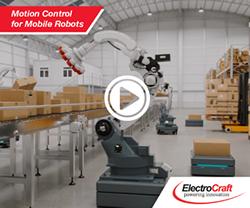Kickstarter - Kamibot Teaches Kids to Code… Isn't Boring!
The papercraft robot that's making it fun for kids to learn to code is off to a strong start on Kickstarter.
DAEGU, South Korea, Feb. 23, 2016 /PRNewswire/ -- Kamibot, the first robot that makes learning to code truly fun for kids (and kidults), launched on Kickstarter on February 16 and has raised nearly $20,000.
Kamibot is a cute, programmable edtech robot, about the size of a coffee mug. It is based around Arduino, so kids can easily program it by using a drag-and-drop programming language like Scratch. The programming skills kids learn with Kamibot are easily transferable to real-world applications.
"Unless we make programming fun, kids are never going to stick with it," said Alvin Chae, co-founder and CEO of 3.14, the company that makes Kamibot. "That's why we put so much effort into the fun elements of Kamibot, creating colorful papercraft skins that let kids dress up Kamibot, and included the ability to control Kamibot with a smartphone or tablet."
Papercraft Skins
Kami (ç'™) is the Japanese word for paper, and is at the root of the word origami (折りç'™), literally folding paper. The Kamibot team have already created about half a dozen unique papercraft skins that kids can print, color, and fold to customize Kamibot and give it character. These include The Count, Frankenstein's monster, a warrior robot, a tank and a missile launcher tank. The company is also working on striking licensing deals for popular cartoon characters.
Hardware
While Kamibot is undeniably fun to play with, it also packs some serious hardware. It's brain is an Arduino compatible board, based on the open-source standard widely used by the maker community around the world. It also includes front-facing ultrasonic sensors that help it recognize and avoid obstacles and navigate through mazes or around a room. Downward-facing IR sensors allow Kamibot recognize and race along a black line on the floor. DC motors power the wheels, and a servo motor allows the heads of the papercraft characters to rotate from side-to-side. Color changing LEDs brighten up Kamibot and make it even more colorful.
Programming Kamibot
Kids can program Kamibot to follow complex courses and do complex actions, using all of its motors and sensors. One example of how to program Kamibot is a treasure hunt. Kids can set up a table-sized treasure hunt map that includes obstacles like plastic alligators and a treasure chest. Then, using Scratch, kids can program Kamibot to wind its way through the course toward the treasure chest. Several programming project plans, including the treasure hunt, are included with Kamibot. Others will be released on the company's website in the future. Kamibot can be programmed wirelessly via Bluetooth or while plugged in via micro-USB.
Launching on Kickstarter
Throughout 2015, Kamibot was tested in Korean classrooms and earned high marks both from students aged 10 to 17, and their teachers. Kamibot launched on Kickstarter on February 16. Earlybird prices start at $89 plus shipping. Pre-orders close on March 17, and Kamibot will ship to backers in June. For more information, visit Kamibot's campaign on Kickstarter.
Featured Product

ElectroCraft's Motion Control for Mobile Robots
ElectroCraft is showcasing its award-winning mobile robot technology including their powerful and compact wheel drives, high-torque-density brushless DC motors, precision linear actuators as well as servo motor drive technology at a variety of conferences and tradeshows including the Boston Robotics Summit. Robotics Summit is the premier symposium for the sharing of ideas, technology, and market developments for robotic technologies across industries. Beyond a showcase and pitch of product, ElectroCraft is eager to participate in the collaborative discussion of challenges and opportunities that will shape the near and long-term robotic marketplace.
